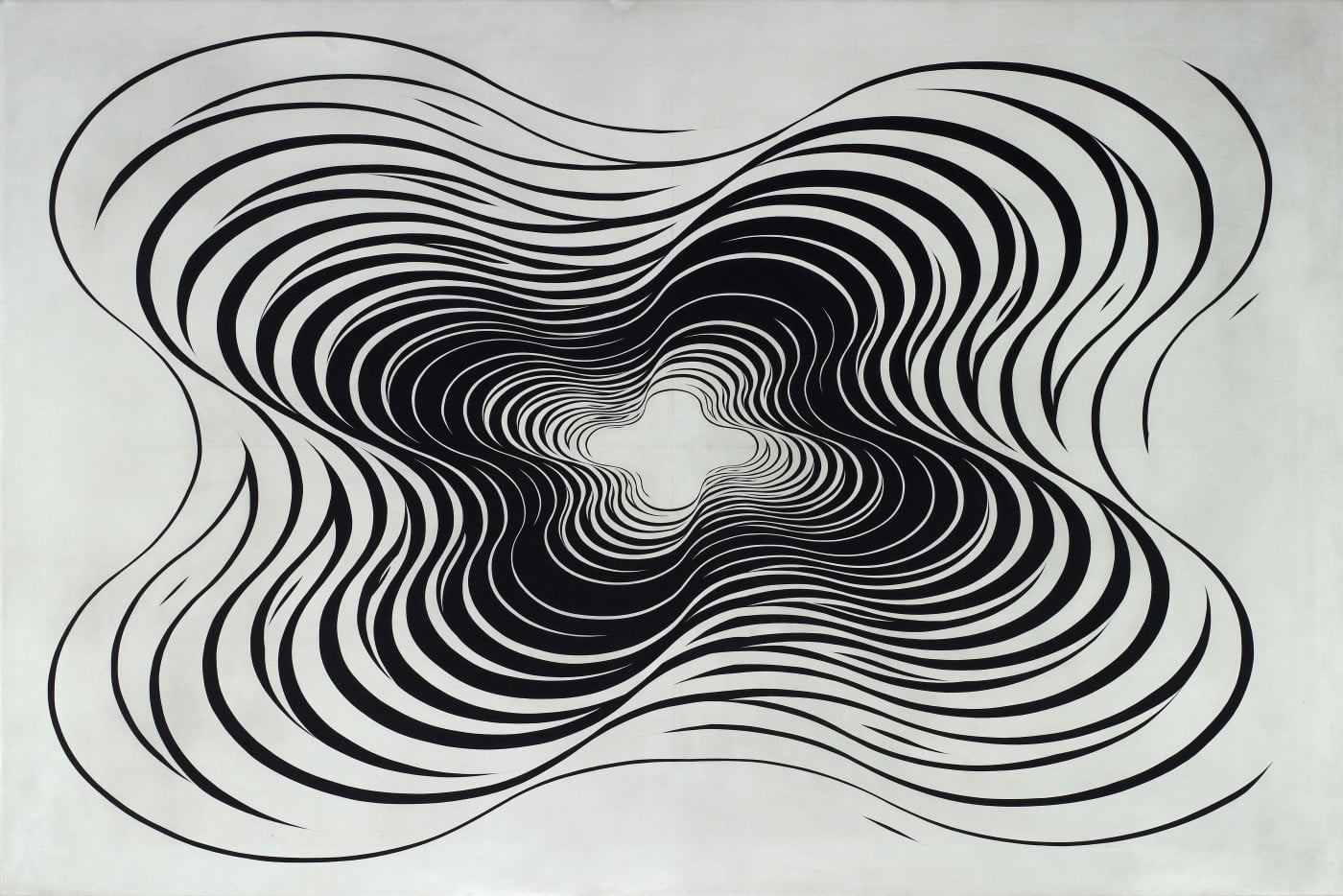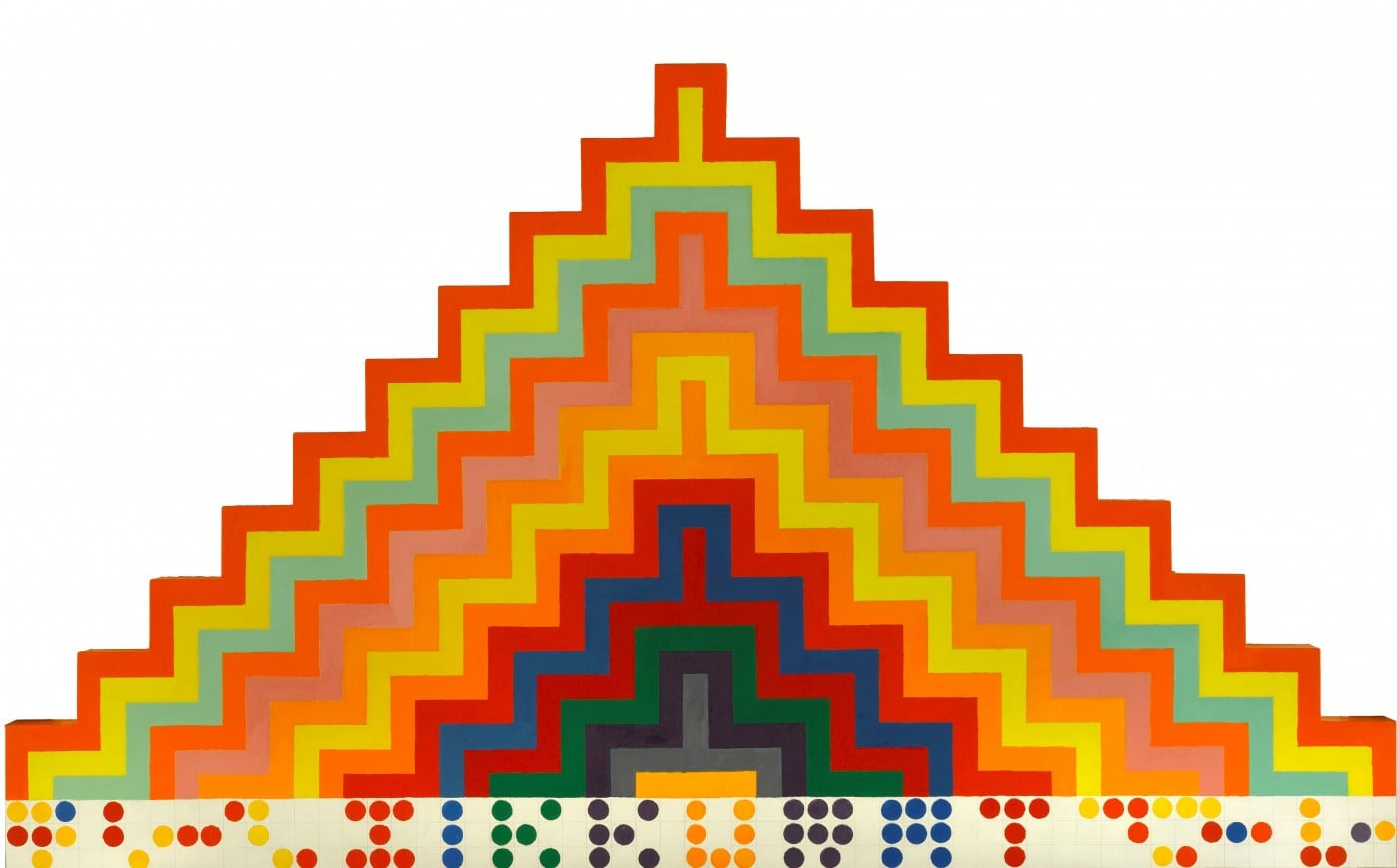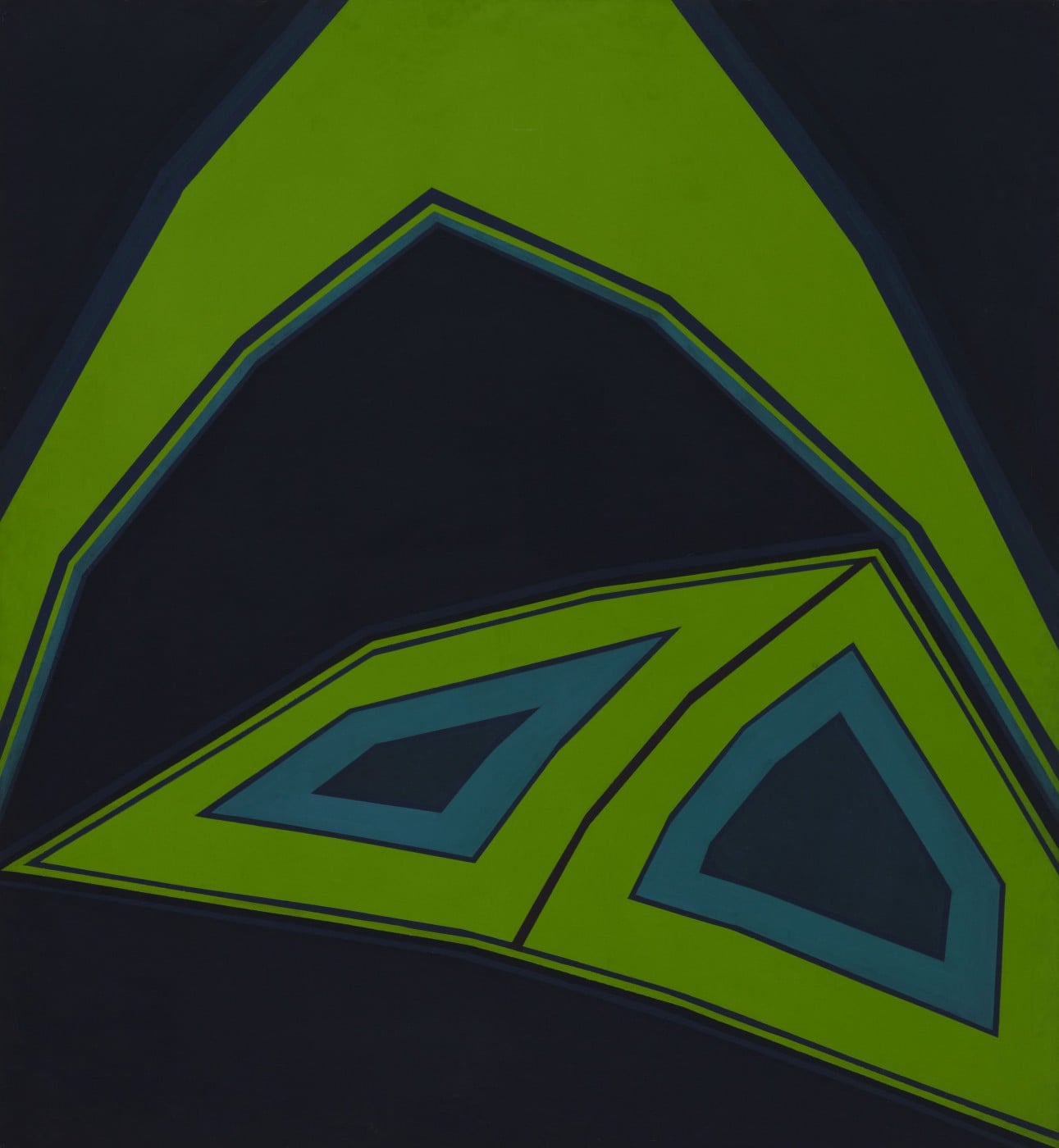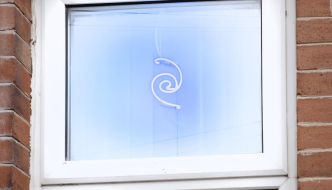A fresh view of 1960s British art: The Walker’s ‘Kaleidoscope: Colour and Sequence’
February 26, 2018

Ilmatar, 1966-1967, Jeffrey Steele. Arts Council Collection, Southbank Centre, London © the artist
An abundance of colour, shape and pattern burst from Kaleidoscope: Colour and Sequence in 1960s British Art, which recently opened at The Walker, Liverpool. The exhibition includes artwork from the Arts Council Collection and features 25 artists, sensitively allowing the visitor to grasp the relationships between the range of art movements and disciplines within this significant decade and elaborating on the importance of these connections. The visitor can experience their own “kaleidoscope” of visions, exploring the broad collection of 1960s British painting and sculpture.
On entering the exhibition, the composition and openness of the space allows the exploration of colour and sequence to begin. Kaleidoscope exhibits large scale paintings and sculptures from a range of movements that transformed 1960s British art, including the Op Art of Bridget Riley (Cataract 3), Pop Art, Conceptualism and the Constructionism of Bernard Schottlander (Auto Ditto). Although these movements may present separate intentions and forms, the exhibition highlights how they connect.

Zikkurat 7, 1967, Joe Tilson, Arts Council Collection, Southbank Centre, London. © Joe Tilson. All Rights Reserved, DACS 2017
One of the most notable artworks in the show was created by Kim Lim. “Candy” is a curious sculptural wooden piece of unusual scale and height, underpinned by a logic of Lim’s own devising that plays with ratio and scale. The vivid warm tones contrast the sleek, harnessed curvatures of the sculpture, creating a sense of balance. The use of simple form makes Candy even more striking and engaging as it creates such a powerful silhouette.
Candy is a favourite of Bethan Lewis, Project Curator at the Walker Art Gallery. Lewis is keen for the show to set up relationships between the artworks, and has paid careful attention to how each work resides in the exhibition space. Lewis maintains a sensitivity to the needs of the visitors, and the shows’ breadth makes it accessible to an audience of varied art-fluency. The spatial dynamics that are found in the exhibition allow visitors to walk around the different artwork on display, whilst also viewing different movements and artists in a singular perspective. This easy-to-navigate curation helps to outline the role of colour, pattern and shape within British art of the 1960s.

St Stephen’s Way, 1964, Tess Jaray. Arts Council Collection, Southbank Centre, London © the artis
Providing a fresh view of 1960s British art, Kaleidoscope: Colour and Sequence in 1960s British Art acknowledges the most significant and progressive art movements of the time. The show is a must-visit for anyone who enjoys the simple delights of form and colour. The elegant curation lends the show a simplicity, letting the visitor dive into a polyphony of conversations between the art works.
Kaleidoscope: Colour and Sequence in 1960s British Art is an Arts Council Collection touring exhibition which is part of the Arts Council Collection National Partners Programme at the Walker Art Gallery. The exhibition will be running from the 24th February- 3rd June 2018 at the Walker which is free entry and includes a resource space linked to the exhibition which provides additional education relevant to Kaleidoscope.
Filed under: Art & Photography
Tagged with: 1960, art, Form, Kaleidoscope: Colour and Sequence in 1960s British Art, Kim Lim, liverpool, Now Showing, The Walker



Comments